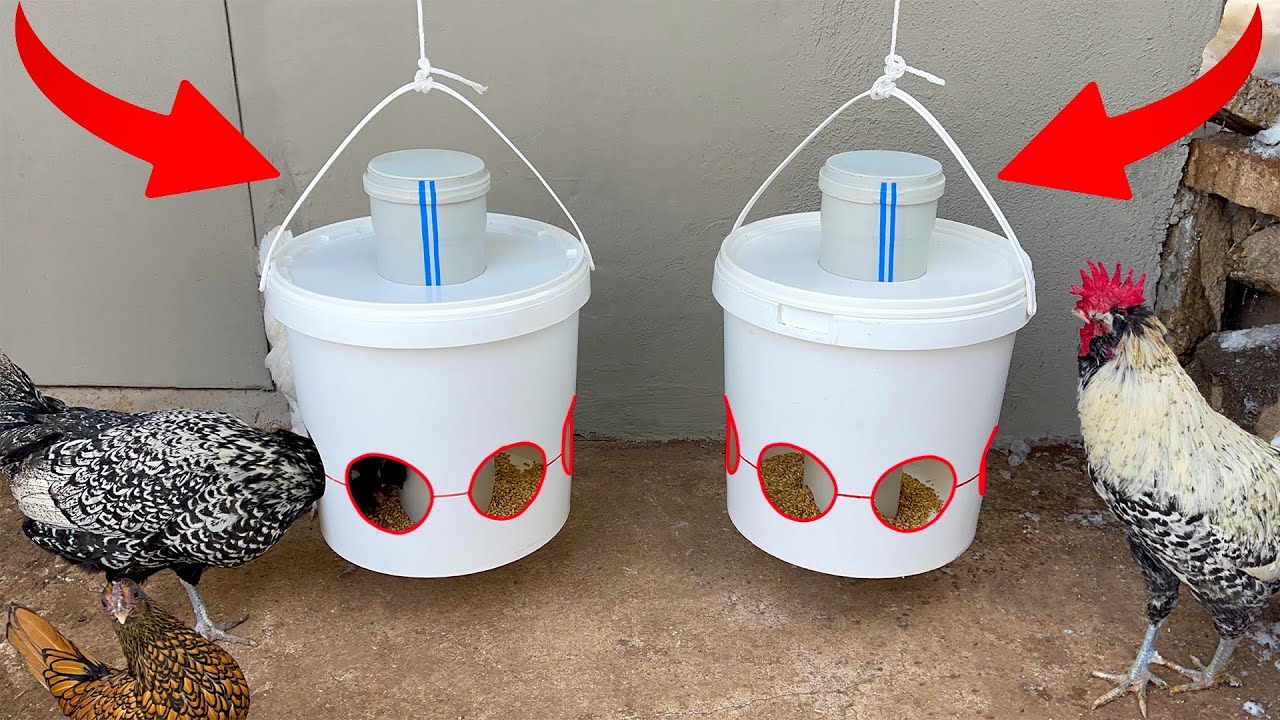Raising backyard chickens has become increasingly popular as more people seek sustainable and organic food sources. One of the ongoing costs of keeping chickens is feeding them. While purchasing commercial chicken feed is convenient, many chicken keepers are turning to do-it-yourself (DIY) chicken feeders to save money. In this article, we will explore the potential cost-saving benefits of DIY chicken feeders and provide tips on creating your own cost-effective feeders.

-
The Cost of Commercial Chicken Feed
Before diving into the world of DIY chicken feeders, it’s essential to understand the costs associated with commercial chicken feed. The price of commercial chicken feed can vary significantly depending on the brand, quality, and region. Typically, chicken feed is sold in various forms, such as pellets, crumbles, and mash, with different formulations for different stages of a chicken’s life, like chicks, layers, and broilers.
Purchasing commercial chicken feed can add up quickly for a small flock of chickens. The price of a 50-pound bag of feed may range from $15 to $30, depending on the type of feed and your location. Larger flocks and more substantial consumption can increase expenses, making chicken feed one of the most significant ongoing costs of keeping chickens.
-
Benefits of DIY Chicken Feeders
DIY chicken feeders offer several advantages, which can potentially lead to cost savings over time:
a. Reduced Waste: Commercial feeders are often prone to spillage, which can result in wasted feed. DIY feeders can be designed to minimize waste by controlling the flow of feed, allowing chickens to access it as needed.
b. Customization: You can customize the design and capacity of your DIY chicken feeders, tailoring them to your flock’s specific needs. You can adjust feeder sizes based on the number of chickens and your budget.
c. Reuse and Repurpose: Many DIY chicken feeders can be constructed from recycled or repurposed materials, reducing upfront costs. Old buckets, PVC pipes, or wooden scraps can be transformed into functional feeders.
d. Creativity: Building your own feeders can be a fun and creative project, providing a sense of accomplishment and satisfaction.
-
Types of DIY Chicken Feeders
There are several DIY chicken feeders to choose from, each with its own advantages and considerations. Here are some standard options:
a. Gravity Feeders: These feeders rely on gravity to dispense feed gradually as chickens consume it. They are typically made using large containers like buckets or barrels with feeding ports at the bottom. Gravity feeders are simple to construct and can reduce waste by preventing spillage.
b. Treadle Feeders: Treadle feeders require chickens to step on a platform to access the feed. This design keeps pests and rodents away from the feed and can effectively reduce feed loss.
c. PVC Pipe Feeders: PVC pipe feeders are easily created using PVC pipes and fittings. They can be hung or mounted on walls and are known for their durability and ease of cleaning.
d. Wall-Mounted Feeders: These feeders are attached to the coop’s walls and are ideal for smaller flocks. They are typically wood-made and can be customized to fit the available space.

-
DIY Feeder Construction Tips
To make the most of your DIY chicken feeders and maximize potential cost savings, consider the following tips:
a. Plan Carefully: Measure your available space and determine the chickens you feed. This will help you design the right-sized feeder.
b. Use Safe Materials: Ensure that the materials you use to construct the feeder are safe for chickens. Avoid toxic paints, adhesives, or materials that could harm your birds.
c. Keep It Clean: Regularly clean and maintain your feeders to prevent mold, bacteria, and other contaminants that can harm your chickens. Hygiene is essential for their health and well-being.
d. Pest Prevention: Consider adding features to your feeders that deter pests and rodents. This will help protect your feed from being stolen or contaminated.
e. Test and Adjust: Monitor how well your DIY feeders work and adjust as needed. You aim to minimize feed waste while ensuring your chickens have access to the nutrition they require.
-
Potential Downsides and Challenges
While DIY chicken feeders can save you money, there are some potential downsides and challenges to consider:
a. Initial Investment: While many DIY feeders can be made from low-cost or recycled materials, there may be an initial investment in tools or equipment if you don’t already have them.
b. Time and Effort: Building and maintaining DIY feeders can be time-consuming. If you have a busy schedule, this may not be your best option.
c. Learning Curve: If you’re not experienced with DIY projects, constructing effective feeders may require some learning. You may need to experiment with different designs to find what works best for your flock.
d. Weather Considerations: DIY feeders may not be as weather-resistant as some commercial options. You may need to protect them from the elements to ensure they last.
The Bottom Line
DIY chicken feeders have the potential to save you money in the long run by reducing feed waste and offering customization options. However, initial costs, time investments, and learning curves should be considered. The decision to use DIY feeders should be based on your specific circumstances, including the size of your flock, your budget, and your willingness to invest time and effort into feeder construction and maintenance. When done right, DIY chicken feeders can be a cost-effective and rewarding addition to your backyard chicken-keeping experience.
See Also:
- Why Every Animal Farmer Should Buy a Pelletizer Machine
- SunVara Bee Smoker Review
- Manna Pro Harris Farms Nurture Right Incubator Product Review
- 5 Best Honey Bee Smokers in 2024
- 5 Best Chicken Pluckers to Buy in 2024
